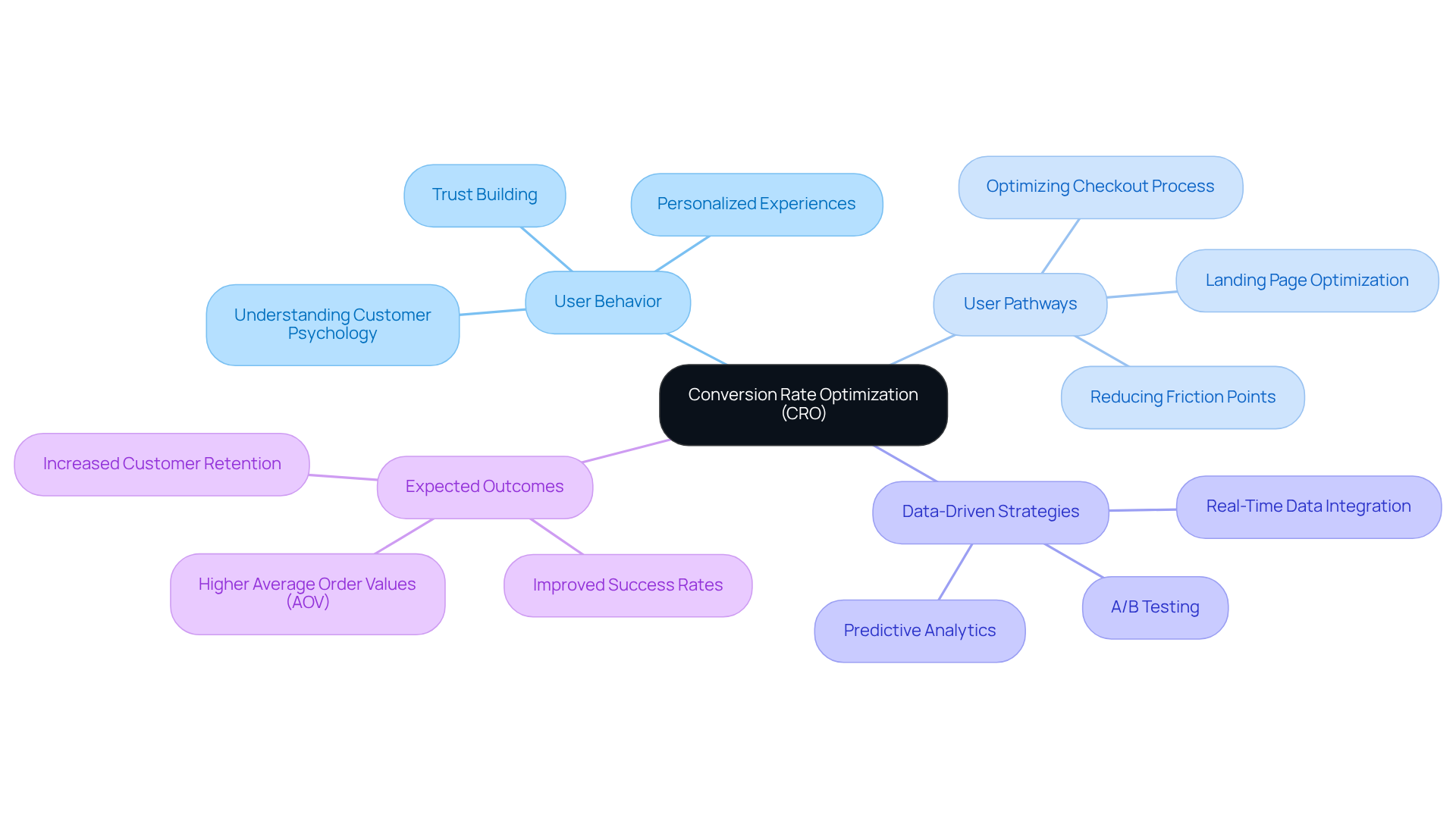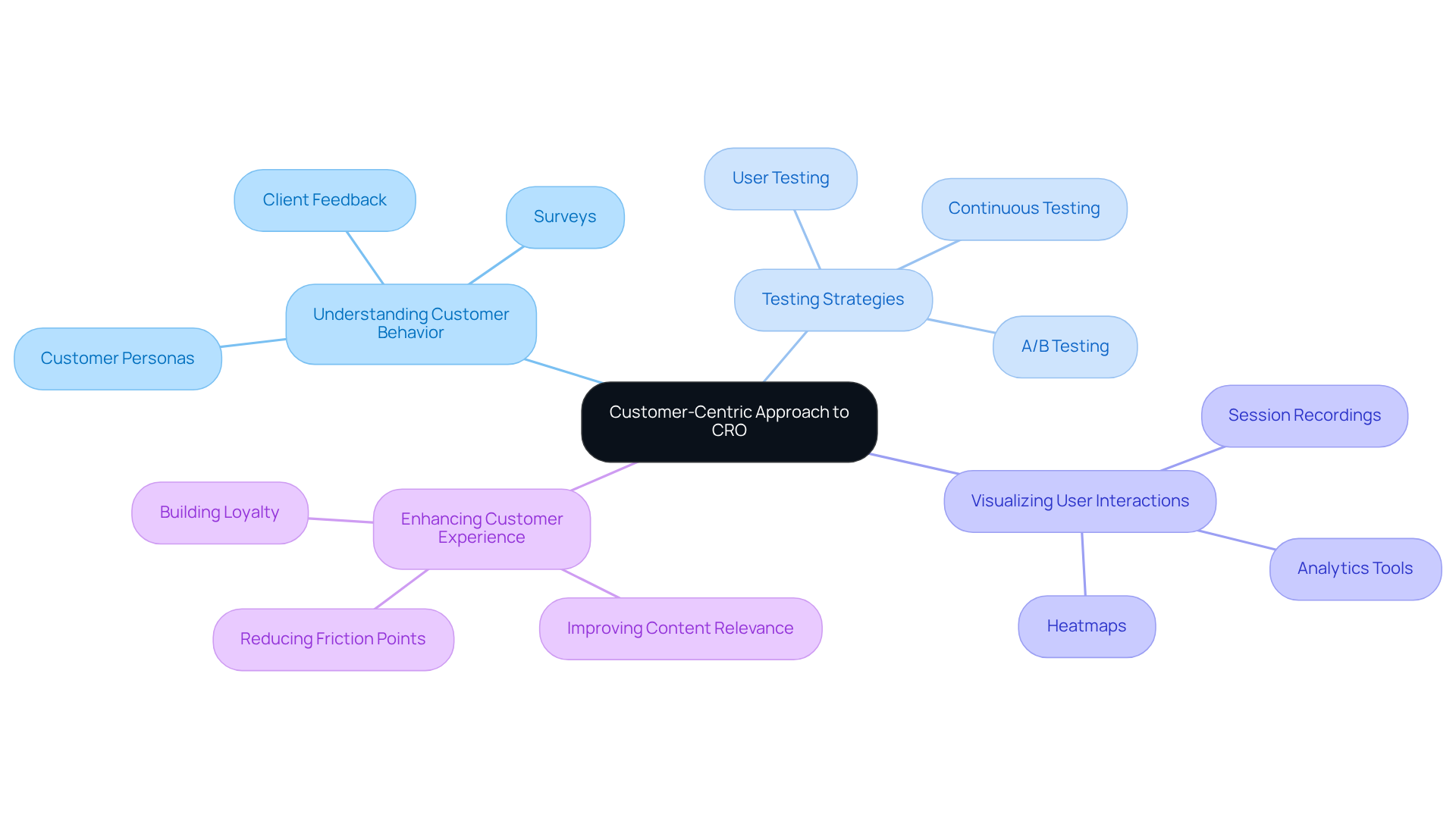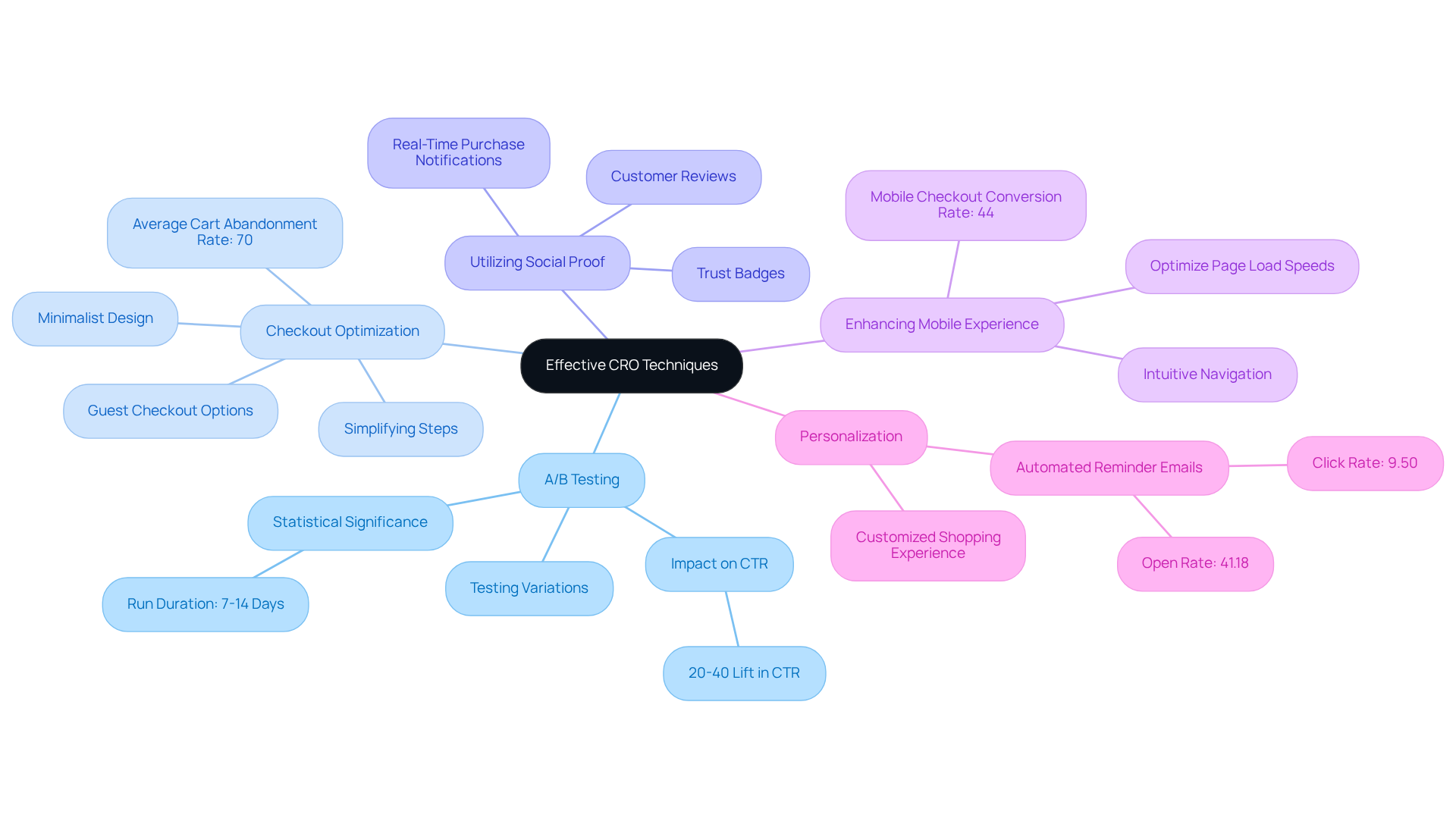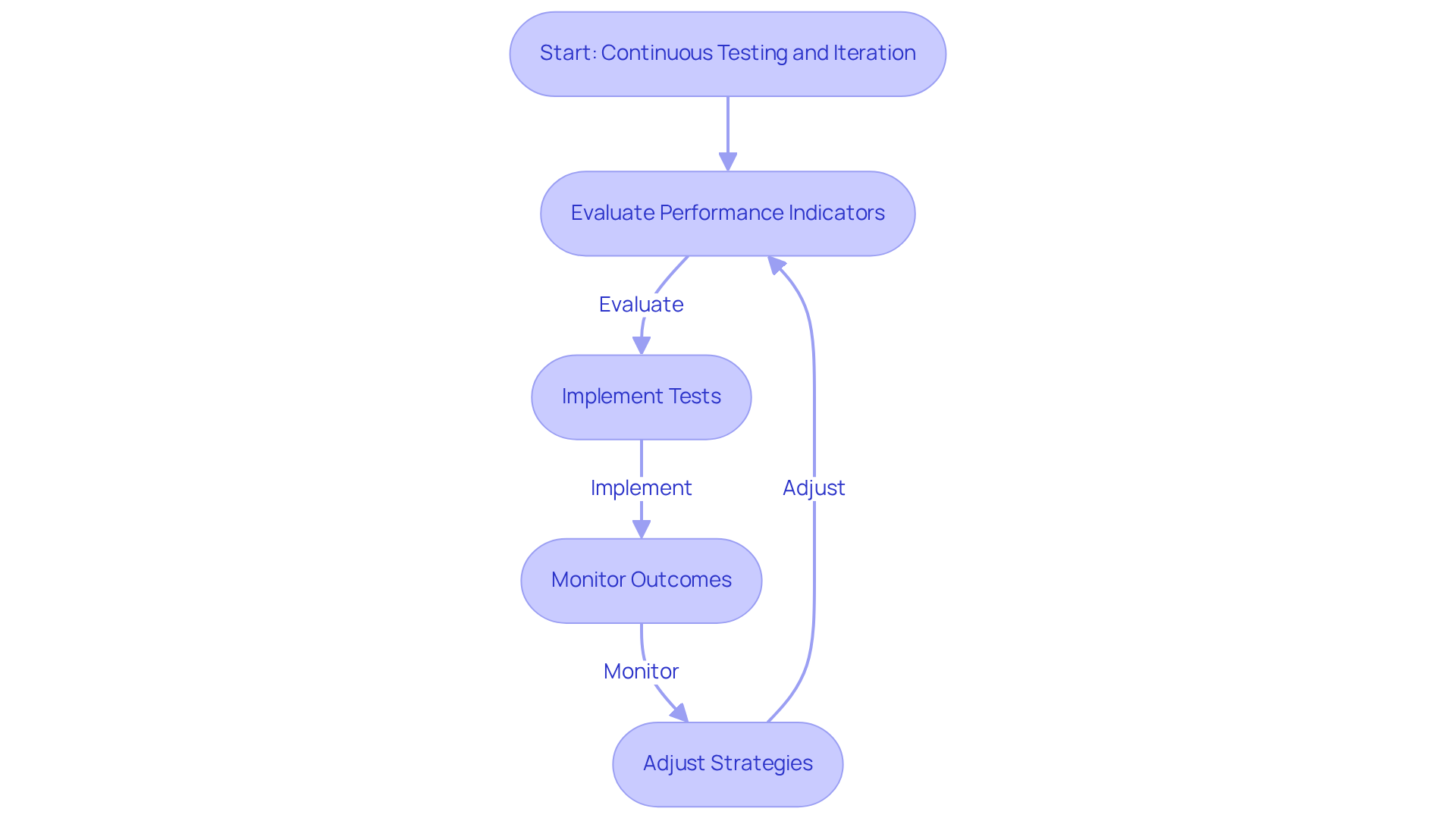
Overview
The primary focus of this article centers on effective strategies for mastering website Conversion Rate Optimization (CRO), specifically designed to elevate the success of direct-to-consumer (DTC) brands. By adopting a customer-centric approach and leveraging proven techniques such as A/B testing, DTC brands can significantly enhance their conversion rates and overall profitability. This assertion is bolstered by compelling case studies and robust statistical evidence presented throughout the article, underscoring the necessity of continuous testing and iteration in achieving sustained success.
Introduction
Website conversion rate optimization (CRO) stands as a pivotal strategy for direct-to-consumer (DTC) brands aiming to maximize profitability without incurring additional advertising costs. By enhancing user experiences and understanding customer behaviors, companies can unlock substantial returns on their existing traffic. However, as the eCommerce landscape grows increasingly competitive, a pressing challenge persists: how can brands effectively implement proven CRO techniques to not only elevate conversion rates but also cultivate enduring customer loyalty? This article explores essential strategies and best practices that empower DTC brands to excel through optimized website performance.
Understand Conversion Rate Optimization (CRO)
Website CRO stands as a systematic approach aimed at increasing the percentage of website visitors who engage in desired actions, such as making purchases or subscribing to newsletters. For direct-to-consumer (DTC) companies, implementing effective website CRO strategies can significantly enhance profitability without the need for additional advertising expenditures. By optimizing existing traffic, brands can maximize their return on investment (ROI) while fostering deeper customer engagement.
Essential components of website CRO encompass understanding user behavior, analyzing user pathways, and employing data-driven strategies to enhance user experience and drive results. Brands that prioritize website CRO can anticipate measurable outcomes, including higher average order values (AOV) and improved success rates. Research indicates that companies focusing on website CRO can achieve conversion increases of up to 30%, underscoring its critical role in the competitive eCommerce landscape.
For example, a DTC company specializing in sustainable personal care products witnessed a remarkable increase in transaction success and customer satisfaction after executing a comprehensive CRO strategy in collaboration with Parah Group. This initiative involved and refining the checkout process, illustrating how targeted website CRO can yield substantial profitability gains.
Industry leaders stress the urgency of maximizing ROI through effective website CRO strategies. As one expert remarked, "Focusing on a specific niche can have a much bigger impact on your business’s growth and sustainability." By embracing a tailored approach to website CRO, DTC companies can unlock their full potential and thrive in an increasingly competitive market.

Adopt a Customer-Centric Approach to CRO
To effectively implement website CRO, companies must adopt a customer-centric approach that prioritizes understanding customer behavior, preferences, and pain points. This objective can be achieved through various methods, including surveys, user testing, and detailed analytics. By developing comprehensive customer personas, companies can tailor their website CRO to meet the specific needs of their audience.
Utilizing heatmaps and session recordings enables brands to , thereby pinpointing friction points and identifying areas for enhancement. Incorporating client feedback into the website CRO optimization process results in more relevant content and offers, significantly increasing success rates. Brands that prioritize enhancing the customer experience are more likely to foster loyalty and encourage repeat business, ultimately driving sustainable growth.
Statistics indicate that removing unnecessary form fields can elevate success rates by as much as 3%, while 60% of companies report improved outcomes after implementing A/B testing. As illustrated by Parah Group's case studies, defining tangible outcomes is essential for effective website CRO strategies. For instance, a $30M clothing label experienced a 35% increase in success metrics following enhancements to their homepage and the reduction of friction points.
By embracing a holistic approach and employing rigorous testing strategies, brands can sidestep common pitfalls, such as an overemphasis on vanity metrics, ensuring that their CRO efforts yield meaningful results.

Implement Proven Techniques for Effective CRO
Several proven techniques can significantly enhance conversion rate optimization (CRO) for DTC brands:
- A/B Testing: Regularly testing different versions of landing pages, product pages, and calls-to-action (CTAs) is essential for website CRO, as it helps identify elements that lead to the greatest outcomes. Variations in headlines or button colors can reveal user preferences, leading to improved engagement. A/B testing should ideally run for 7-14 days to ensure statistically valid results, continuing until results reach statistical significance.
- Optimizing checkout processes is crucial for website CRO, as it helps decrease cart abandonment percentages, which average around 70%. Simplifying steps, offering guest checkout options, and ensuring a variety of secure payment methods can significantly enhance user experience. Retailers that adopt a tidy, minimalist checkout design frequently observe enhanced sales, as clutter can bewilder customers.
- Utilizing , such as customer reviews, testimonials, and trust badges, enhances credibility and contributes to website CRO while promoting sales. Real-time purchase notifications can create a sense of urgency, motivating potential buyers to complete their purchases. Studies show that exhibiting trust signals can result in increased success in sales, as customers feel more secure in their buying choices.
- Enhance Mobile Experience: With mobile devices generating 60% of online traffic, focusing on website CRO to ensure a seamless mobile shopping experience is vital. This includes optimizing page load speeds and creating intuitive navigation. Mobile shoppers possess an average checkout success percentage of 44%, with leading stores achieving 64% or above. This can be greatly enhanced by tackling frequent issues like slow loading times and complicated navigation.
- Personalization through website CRO: Customizing the shopping experience according to user behavior and preferences can lead to increased engagement and conversion levels. Personalized product recommendations and targeted email campaigns can effectively re-engage customers, particularly those who have abandoned their carts. Automated reminder emails for abandoned carts have exhibited high performance statistics, including an open percentage of 41.18% and a click percentage of 9.50%, demonstrating the effectiveness of personalized outreach.

Embrace Continuous Testing and Iteration
To achieve long-term success in website CRO, companies must cultivate a culture of . This requires a consistent evaluation of performance indicators, including:
- Transformation ratios
- Bounce statistics
- Average session length
Alongside user feedback to identify enhancement opportunities. By implementing a structured testing framework, such as the Plan-Do-Check-Act (PDCA) cycle, organizations can systematically approach their website CRO optimization efforts. A compelling case study with Electrolux illustrates effective testing strategies that resulted in significant increases in engagement and transaction volume.
After applying modifications based on test outcomes, companies should closely monitor their impact on website CRO and user engagement. Positive results warrant scaling, while negative outcomes prompt further adjustments. Moreover, employing tools like heatmaps and analytics is essential for website CRO as it provides ongoing insights into user behavior, enabling companies to stay ahead of trends and continuously refine their strategies.
However, it is crucial for organizations to recognize common pitfalls in implementing a structured testing framework, such as cultural resistance to testing, which can impede progress. By committing to a process of ongoing optimization, DTC brands can ensure they remain competitive and responsive to their customers' evolving needs.

Conclusion
Mastering website conversion rate optimization (CRO) is imperative for direct-to-consumer (DTC) brands seeking to elevate profitability and customer engagement. By strategically enhancing the user experience, brands can transform existing traffic into actionable results, all while avoiding additional advertising expenditures. The integration of data-driven insights with customer-centric approaches can yield substantial increases in conversion rates, highlighting the critical role of CRO in today’s competitive eCommerce landscape.
This article has explored essential strategies, including:
- The necessity of comprehending user behavior
- The execution of A/B testing
- The optimization of the checkout process
By emphasizing personalization and social proof, brands can cultivate a more engaging shopping experience that resonates with their audience. Furthermore, the significance of continuous testing and iteration has been underscored as a vital means to refine strategies and adapt to the ever-evolving needs of customers.
Ultimately, adopting a holistic approach to CRO not only fosters immediate enhancements in conversion rates but also nurtures long-term brand loyalty and growth. DTC brands are urged to prioritize these proven techniques and commit to ongoing optimization efforts. By doing so, they can unlock their full potential and thrive in an ever-evolving marketplace, ensuring they remain relevant and responsive to their customers' desires.
Frequently Asked Questions
What is Conversion Rate Optimization (CRO)?
Conversion Rate Optimization (CRO) is a systematic approach aimed at increasing the percentage of website visitors who engage in desired actions, such as making purchases or subscribing to newsletters.
Why is CRO important for direct-to-consumer (DTC) companies?
For DTC companies, effective website CRO strategies can significantly enhance profitability without the need for additional advertising expenditures by optimizing existing traffic and maximizing return on investment (ROI).
What are the essential components of website CRO?
Essential components of website CRO include understanding user behavior, analyzing user pathways, and employing data-driven strategies to enhance user experience and drive results.
What measurable outcomes can brands expect from prioritizing website CRO?
Brands that prioritize website CRO can anticipate measurable outcomes such as higher average order values (AOV) and improved success rates, with some companies experiencing conversion increases of up to 30%.
Can you provide an example of successful CRO implementation?
A DTC company specializing in sustainable personal care products saw a significant increase in transaction success and customer satisfaction after executing a comprehensive CRO strategy, which included optimizing website speed and refining the checkout process.
What do industry leaders say about the importance of CRO?
Industry leaders emphasize the urgency of maximizing ROI through effective website CRO strategies, noting that focusing on a specific niche can have a much bigger impact on a business’s growth and sustainability.
How can DTC companies unlock their potential through CRO?
By embracing a tailored approach to website CRO, DTC companies can unlock their full potential and thrive in an increasingly competitive market.
FAQs











